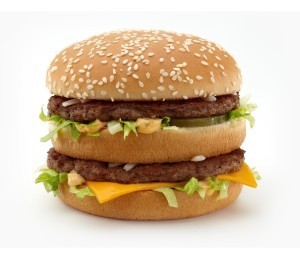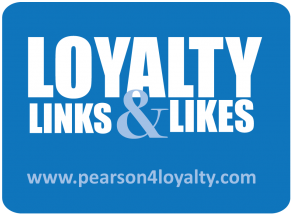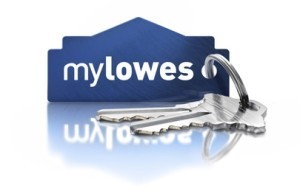Bryan Pearson's Blog, page 41
November 11, 2013
For Beloved Brands Like Ikea, Amazon, Simplicity is in the Details
 You might not think umlauts, Big Macs and best sellers have a lot in common, but when it comes to brand perception they do. The commonality is simplicity, and many loyalty marketers would do well by learning about their benefits.
You might not think umlauts, Big Macs and best sellers have a lot in common, but when it comes to brand perception they do. The commonality is simplicity, and many loyalty marketers would do well by learning about their benefits.
Ikea, McDonald’s and Amazon are among the top 10 brands in the 2013 Global Brand Simplicity Index, compiled by the brand strategy firm Siegel+Gale. The index reviews the significance of simplicity on brand perception, this year exploring the relationship between simplicity and employee innovation.
The index is a sharp reminder that over-doing it can often put a good idea under foot, and that applies to loyalty strategies. In the effort to create programs that may be all things to all people, loyalty strategists often fall into the trap of over-architecting the program. They include so many tiers and reward options and guidelines that the consumer simply does not have the time to learn the benefits. That translates to lost sales and opportunities.
Consider these brand examples and their reasons for being included in the Simplicity Index:
Amazon: The online merchant’s commitment to effortlessness, like its one-click ordering, has converted many first-time shoppers into brand ambassadors. And, as the report states, every part of Amazon is driven by data that tracks customer experience successes and failures.
McDonald’s: The fast food giant made the list for its clear communications, from its accessible menu to its straightforward pricing. McDonald’s is introducing product packaging that will include QR codes linked to nutritional information, in response to the obesity epidemic.
Samsung: Known best for the Android-operated Galaxy, an iPhone rival, Samsung is casting off its hardware manufacturer image and going for functionality. “Samsung has been heavily investing in promoting its bold technology and innovation,” the report states.
IKEA: Its products may be hard to pronounce, but the challenges end there at Ikea. With simple designs, easy-to-assemble furnishings and clear pricing options, the Swedish retailer is known for extending that simplicity to the home, and hotel. Ikea is partnering with Marriott International to create a brand of hotels called Moxy, designed for millennial travelers.
These brands get simple right because they make complexity look effortless. They build and integrate highly detailed business operations behind the scenes so they know their customer better, and can deliver more relevant products and offers as a result.
Great loyalty programs can do the same – make very simple, compelling and relevant offers that are determined by millions of data points behind the scenes. The organization just needs to ensure all departments are connected to the program and that it reflects the simple message of the brand.
If struggling loyalty operators take some lessons from these brands, they might have a program as palatable as a Big Mac. It does take persistence, but so does assembling a bookcase with an umlaut.
November 6, 2013
November 6: Loyalty Links & Likes
 Here are a few loyalty links that caught my eye this week.
Here are a few loyalty links that caught my eye this week.
1. Seniors on the Go: United Devalues Miles – Chicago Tribune
United Airlines has changed its redemption rates, upping the number of points needed to redeem certain benefits.
2. Loyalty Leaders Tell All – COLLOQUY
Industry execs from FedEx, Wyndham Hotel Group and eBay speak about connecting with customers in ways that are relevant, timely and lasting.
3. Late to the Loyalty Game, Walgreens Pushes the Envelope – AdAge
The drug store chain reportedly already has 85 million members in its Balance Rewards program, this story shares how it’s capitalizing on customer data with the help of Epsilon.
4. In JetBlue Loyalty Program, Families Can Share Points – The New York Times
Story offers more insight into the airlines’ decision to allow point pooling among members.
5. Shoppers’ Faces to be Scanned in Advertising Push at Tesco Petrol Stations Across the UK – The Telegraph
The grocery is installing technology that collects customers data by scanning shoppers’ faces – the information is then sent in real-time to advertisers.
November 4, 2013
Advertising of the Future: Using Data to Create Demand for the Actual Ad (Cats Optional)
 If today’s advertisers have become experts at predicting what we want, then hopefully they are planning for their successors.
If today’s advertisers have become experts at predicting what we want, then hopefully they are planning for their successors.
The future of advertising could be three-dimensional, holographic and include barking cats performing magic tricks. But to many that will not matter, because in a decade or so, advertising also will be optional.
Sure, there will be events that shape the messaging, requiring that advertising of the future be hyper-personal, curated and social. But it also will be on demand, because advertisers are going to have to make their ad content compelling enough that consumers opt in to view it.
Privacy concerns will likely contribute to this change. A 2013 consumer survey by LoyaltyOne shows that more than half of consumers do not trust their data in the hands of companies and 46 percent find it unacceptable that a company tracks their habits. Add to that mounting pressure to give consumers the chance to opt-in to digital advertising and data sharing (rather than opt out) and marketers will likely find themselves designing creative not just for a brand, but for the “opt-in” button.
In other words, advertisers won’t simply be tasked with creating demand for a product – they will be tasked with creating demand for the ad.
And that task will exist in so many places, thanks to multi-channel consumption that has led smart companies to create omnichannel communications strategies. This practice requires the blending of the various communications teams to deliver one consistent brand experience across all channels. The goal: That the consumer looks at an ad in her eyeglasses or dinner plate or transparent pop-up screen (this is 2020) and thinks, “Hey, I want that brand.” Not, “Hey, there’s an ad in my glasses.”
Fortunately, we have the technology to prepare for that future now, through the consumer data we collect. I not only mean digital tracking, but loyalty programs, which serve as unique identifiers that establish a consumer’s preferences, needs and aspirations both online and offline – where no cookies can go.
My only concern is that we may not have the talent to support the need. As I have written before, the data analytics field is projected to come up short of professionals by 2018 – almost 200,000 qualified data scientist positions are expected to be vacant by that time.
So the answer to advertising in the future may actually exist in the industry’s ability to attract the brightest minds today. I envision the most successful agencies will employ data analysts alongside their creative teams.
Let’s hope. Because without them, I am not confident the advertising industry will have access to the insights required to create those “in-demand” on-demand ads – cat or no cat.
October 30, 2013
October 30: Loyalty Links & Likes
 Here are a few loyalty links that caught my eye this week.
Here are a few loyalty links that caught my eye this week.
1. ‘Til Death Do Us Part: Reward Points Don’t Live On – CNBC
What do companies do with customers’ loyalty points when they die? A recent COLLOQUY report reveals transfer policies of industry leaders.
2. DIY Chain Tests Variable Pricing – Retail Wire
B&Q, a home improvement and garden center retailer based in the United Kingdom, uses technology to test variable pricing for customers.
3. Saving Customer Relationships Despite Negative WOM – Direct Marketing News
A recent LoyaltyOne study reveals how companies can turn negative word-of-mouth into positive customer experiences.
4. Kroger Knows Your Shopping Patterns Better Than You Do – Forbes
The grocery chain has made a massive investment in tracking shopper habits to better tailor messaging and promotions.
5. Consumer Financial Protection Bureau to Start Monitoring Credit Card Rewards Program Language – COLLOQUY
The U.S. agency has announced it will begin reviewing credit card rewards language to ensure clarity.
October 28, 2013
Fighting the Switch Means Getting Personal
 Decades ago, a major cigarette brand won a lot of attention with the tagline “I’d rather fight than switch.” Today, U.S. consumers are switching brands to the tune of $1.3 trillion, and marketers appear to be swinging back with empty gloves.
Decades ago, a major cigarette brand won a lot of attention with the tagline “I’d rather fight than switch.” Today, U.S. consumers are switching brands to the tune of $1.3 trillion, and marketers appear to be swinging back with empty gloves.
According to the recently released Accenture Global Consumer Pulse Survey, 51 percent of U.S. consumers switched their retailers, banks, cable companies and other service providers in 2013. That is up 5 percent from 2012, and it represents $1.3 trillion in lost sales to the dropped brands.
Worse, to a loyalty marketer like me, is that only 18 percent of those surveyed said they feel like their service providers offer them tailored experiences. As the report states: “The gap between the use of digital technologies and the ability of companies to use them to improve customer experiences is highlighted by the survey’s findings that, among the 10 industries covered by the report, none made noticeable progress in providing customers with a tailored experience in 2013.”
Not surprisingly, then, that the rate of loyalty among those surveyed consumers rose just 1 percent in the year, while their likelihood to recommend a brand rose 2 percent.
These are troubling numbers, but it does not mean we loyalty marketers are down for the count.
Rather, we should take these stats for what they are: an alarm bell. The loyalty marketing industry invests billions of dollars in personalization technologies, yet 82 percent of people do not think they are provided relevant experiences.
Something is breaking down, and I suspect it is in that pipeline that runs between acquiring the technology and deploying the experience. The data insights are not being used to woo and wow the customer, but to craft eye-catching promotions that are relevant only to the expiration date.
Companies tend to default to price as competition heats up, but you can only cut so far before hitting bone. To prevent the switch, brands should sprinkle their price tactics with some true personalization, which can be achieved through analysis of customer data. Why not try to create a brand experience that stands apart, based on what you know about customers?
I’m not sure how dire the situation is and how far we are going to have to go to really push the metrics upwards, but it’s a complete miss if we are not taking advantage of the investments we make in this area. I’ll underscore the point with another finding from the research: 51 percent of those surveyed said they expect specialized treatment for being a good customer.
As marketers, that is an expectation we should fight for.
October 23, 2013
Fast Company: Blood, Beer, And Bourbon: How To Turn Negative Word Of Mouth Into Positive Promotion
In the best of times, and the worst of times, social media can be used to effectively engage–and learn about–your customers.
One might not think bourbon, beer, and loyalty programs have much in common, but they do when it comes to turning an oops into an opportunity.
All three proved as much when faced with the prospective fallout of negative word of mouth.
In the case of bourbon, the popular distillery Maker’s Mark realized the depth of its customers’ dedication–and anger–when it announced it would reduce its alcohol level to meet demand. Its customers howled and Maker’s Mark quickly changed its decision, deepening engagement in the process.
The beer boon took place after a Red Cross employee mistakenly sent a tweet referencing a four-pack of Dogfish Head beer with the message, “when we drink we do it right #gettngslizzerd.” Dogfish Head quickly jumped on the hashtag and asked its fans to donate to the Red Cross. The Red Cross, meanwhile, responded with humor: “the Red Cross is sober and we’ve confiscated the keys.”
Both of these events lead to a theory–that negative word of mouth may actually indicate brand passion and lead to increased sales and engagement–if acted upon appropriately and quickly. (Of course, there are notorious examples of lost causes.)
So when the Air Miles Reward Program, operated by LoyaltyOne, recently made a couple of program changes, it decided to closely follow the social media response. The results are in a report coauthored by researchers at Northwestern University, called “The Positive Power of Negative Word-of-Mouth.”
The research revealed some unexpected numbers, particularly regarding perception and, in the case of loyalty programs, increased redemptions. As the report puts it, “The very instance of negative engagement is both a warning and, when best practices are employed, an opportunity.”
Among the findings: Those customers who posted comments to social media were 70% more actively engaged with the brand than non-posters.
Surprising Activity
The study analyses the outcome of when the Air Miles Reward Program made a couple of key program changes. One of these changes affected guidelines for reward miles redemption, a sensitive area for loyalty customers.
Realizing this, and knowing that engaged members tend to express their opinions when program rules change, LoyaltyOne flagged the shared member commentary on its community website. Researchers and linguistic analysts from Northwestern University’s Medill IMC Spiegel Research Initiative examined all posts related to the program’s changes. Linking each post and related viewing activity to LoyaltyOne’s transaction and redemption data, the analysts compared behaviors for a 15-week period against a control group of 10,000 offline loyalty program members.
They expected some verbal pushback, but they were surprised by actual member activity afterward.
First, the researchers determined that those members who posted comments were generally more valuable customers–70% more actively engaged–and that their negative comments stemmed from their emotional connection with the brand. They were, as the report describes it, “more passionate in expressing their opinions.” A similar phenomenon took place in the story involving Maker’s Mark.
Passion can lead to activity, and it did for air miles. About one-third of those who posted comments redeemed reward points soon afterward. They also increased their collection activity by 36%. That compares with a 21% lift among redeemers in the control group.
How did the researchers account for such positive results? During the commentary period, LoyaltyOne responded to specific questions and clarified any inaccuracies when they were posted. This is a critical point of the research: LoyaltyOne’s strategy at the time was to offset the negative perceptions and comments with simultaneous positive experiences, basically exposing its most dedicated members to the core values that initially attracted them to the brand.
This brand-love approach is similar to how the Red Cross restored its reputation by relying on its crisis-management expertise (with humor) and how Maker’s Mark depended on its quality (with alcohol).
Turning Frowns Upside Down
Through the research, LoyaltyOne found that brands could challenge the loyalty of even emotionally engaged consumers. It is up to the organization to monitor the relationship regularly and reinforce the elements that make it positive. This goes double when implementing change.
If we have the data and the resources to launch a timely response plan that is genuinely worded, we can turn negative word of mouth into good publicity and improved business.
Here are some tips for leveraging that brand passion and keeping the relationship strong:
Use the data: Analyze transactions, redemptions, and social media traffic data from both social media posters and viewers during and after any period that may provoke negative word of mouth.
Be fleet of foot: Prepare to act quickly if negative commentary begins to contribute to unwanted media buzz and declining sales. A targeted response plan should express genuine appreciation for the comments and promote positive product or brand qualities.
Watch your own word of mouth: Let customers know their opinions are welcome. Recognize their commentary and react in a nonconfrontational manner to reassure posters and viewers alike that the brand cares about what they have to say.
Go public: Angry comments can diminish brand integrity and cause other readers to second guess their own purchases. Publicly responding through the same social media channels can ensure that the positive changes are seen.
As always, it’s best to prepare for a response plan by first identifying what makes customers loyal to the brand in the first place. Because, whether it’s bourbon or beer, loyalty programs or the Red Cross, any brand can make a mistake. But it takes passion on both sides to turn it into an opportunity.
October 23: Loyalty Links & Likes
 Here are a few loyalty links that caught my eye this week.
Here are a few loyalty links that caught my eye this week.
1. Orbitz Hopes Rewards Program is Ticket to Resurgence – Chicago Tribune
The travel booking site has launched a loyalty program that lets customers earn and redeem instantly.
2. Inherit the Windfall: Passing On Loyalty Points – COLLOQUY
A new report reveals companies’ policies for what happens to a member’s loyalty points when he or she dies. See where leading programs stack up.
3. Kirkland’s Launches K Club Rewards Program – Patch.com
Specialty home décor and gifts retailer Kirklands has announced a point-based loyalty program for customers.
4. How American Giant Changed the Apparel Paradigm and Built ‘Almost Irrational Loyalty’ – Fast Company
The clothing retailer demonstrates that sometimes all a company needs to build loyalty is a sound business plan.
5. Marketing Must: Customer Data Points to Stop Ignoring – Now – Entrepreneur
Author shares some easily obtained customer data points and why companies should be collecting the information.
October 21, 2013
Lowe’s App a Do-It-Yourself Tool for Loyalty
 Call it a tool of engagement. The MyLowe’s smartphone app is making relationship-building a DIY project.
Call it a tool of engagement. The MyLowe’s smartphone app is making relationship-building a DIY project.
And like many things DIY, this can be very advantageous. The app, by the home improvement chain Lowe’s, enables customers to look up their own purchase history and DIY projects based on data through the 7 million-member MyLowe’s program. Introduced as an online feature in 2011 and later expanded to mobile, it has been empowering consumers to check their shopping behaviors long before Acxiom made headlines by enabling consumers to review their data collected by marketers.
But it was while reading a recent Q&A in eMarketer with Sean Bartlett, Lowe’s director of mobile strategy and platform, that I realized the full scope of how the chain uses the app, and smartphones, in the store.
Lowe’s employees carry iPhones so they can check inventory availability by store. The app can pull up a product, show how many are in stock and the fulfillment methods available. Customers and workers also can locate the product down to the aisle, or recall the dimensions of a room that was painted a couple years ago.
As Bartlett put it in the interview: “It’s really powerful for the overall relationship if we can tie customer and associate.”
More important, the app gives consumers control to use their own data in a way that benefits them – and that is a valuable asset. A recent survey by LoyaltyOne shows that 72 percent of consumers would willingly provide more information if they had control over the data. In fact, if you ask consumers if they are comfortable with companies tracking their information, almost half say they are not.
Which leads to the old challenge of using potentially invasive technology to do something exceptionally good. Smartphones and mobile apps are changing the dynamics of consumer engagement and are ushering in brilliant innovations, as Lowe’s demonstrates. But even consumers who use GPS tracking expect to have some privacy at times. Consumers have pretty much gained control of the purchase experience; they will want control of the data-sharing relationship as well.
MyLowe’s is integrating the mobile channel in a way that benefits the consumer, and in doing so it is raising the bar for all merchants. As I look at my own portable marketing device and its untold capabilities, I wonder what other DIY tools are in the future.
But before embarking on the next venture – just like before expanding the kitchen – we should measure twice, cut once, and always ask: do you really want to screw it up?
October 16, 2013
October 16: Loyalty Links & Likes
 Here are a few loyalty links that caught my eye this week.
Here are a few loyalty links that caught my eye this week.
1. When Mouse Type Causes and Uproar: Four Steps to Preventing Disloyalty – COLLOQUY
Why it’s important for loyalty marketers to get the fine print right with their loyalty programs.
2. JetBlue to Let Families Pool Loyalty Points – NBCNews.com
The airline has added a new feature to its loyalty program that lets members create groups to earn and share points.
3. Tea and Cake All Round As John Lewis Enters the Loyalty Card Market with ‘My John Lewis’ – The Telegraph
The UK retailer has launched a loyalty program that rewards customers with free tea and cake every month, among other things.
4. Millennial Travelers Spend More, Complain More – USA Today
A recent study has revealed the travel habits and loyalty program affinity of those between the ages of 18 and 30.
5. How Loyalty Cards Could Help Make Us a Healthier Country – Herald Scotland
The Scottish government is considering using grocery store loyalty card information to create health policies.
October 14, 2013
Putting a Fair Price on Customer Loyalty
 It’s hard to put a price on customer loyalty, but thanks to technology and flexible pricing models, some marketers are trying. The trick is determining what’s a fair price.
It’s hard to put a price on customer loyalty, but thanks to technology and flexible pricing models, some marketers are trying. The trick is determining what’s a fair price.
Advancing technologies are enabling marketers to price products and services based on intricate detail, such as product shelf life, individual consumer behavior, demand and proximity, according to a recent story in The Curve Report.
With new flex pricing models, the story states, “Prices shift based on a wide range of variables, from external factors like expiration date and stock market fluctuations to personal data such as proximity and social clout. And while shopping history−based loyalty programs have helped consumers score deals for decades, expect these programs to gain new dimensions.”
The topic is not necessarily new. In fact, a blog item I wrote more than a year ago addressed practices by some companies that priced offers based on the consumer’s profile. The risk, I noted then, was of being misinterpreted as unfair.
That still applies. Historically, most organizations looked at price as a default promotional tool –when all else fails, you can sell products by cutting the price. But now data enables us to use price as a strategic lever to get the right customer to make purchases. It can literally be used at the customer level as a way to promote selective trial of products or to recognize specific behaviors.
But there is a risk, and that is of under-defining the data. Some consumers may behave as if they are not price sensitive, but in certain categories they may be hyper price sensitive. If they are overlooked for certain promotions, they may feel the brand is not offering a fair opportunity across the board.
However, if we use the data as a way to define the full spectrum of consumer preferences and activity, across categories and channels, price can be used to ensure customers are introduced to the right products and services in the right way. A shopper may pay top price for mangoes, for instance, but balk at expensive goat cheese. She may be willing to spend more on a Friday than on a Monday, or less in an urban store than a suburban store. Add mobile and online channels, and the variables multiply.
We certainly should be prepared, because some consumers might soon demand to know their price. According to the Curve Report story, it tested several new flex pricing models and as many as 76 percent of 18- to 49-year-olds were interested in at least one of them. Two-thirds (66 percent) said they’d prefer pricing that is flexible rather than fixed.
So instead of seeing price as the last line of defense in a fluid marketing environment, think of it as one more strategic arrow in your quiver. Just be sure it hits the target, fair and square.
Interested in talking more on this topic or others? I’ll be at DMA2013 in Chicago this week for two events. On Tuesday, the 15th, I’ll be with a part of the panel discussion, “Loyalty Leaders Tell All: Turning Customer Information Into Customer Intimacy” with my peers from FedEx and Wyndham Rewards. Late that day, I’ll be part of a session called “ Top Five Privacy Issues…Revealed.”
Hope to see you there!
Bryan Pearson's Blog
- Bryan Pearson's profile
- 4 followers



